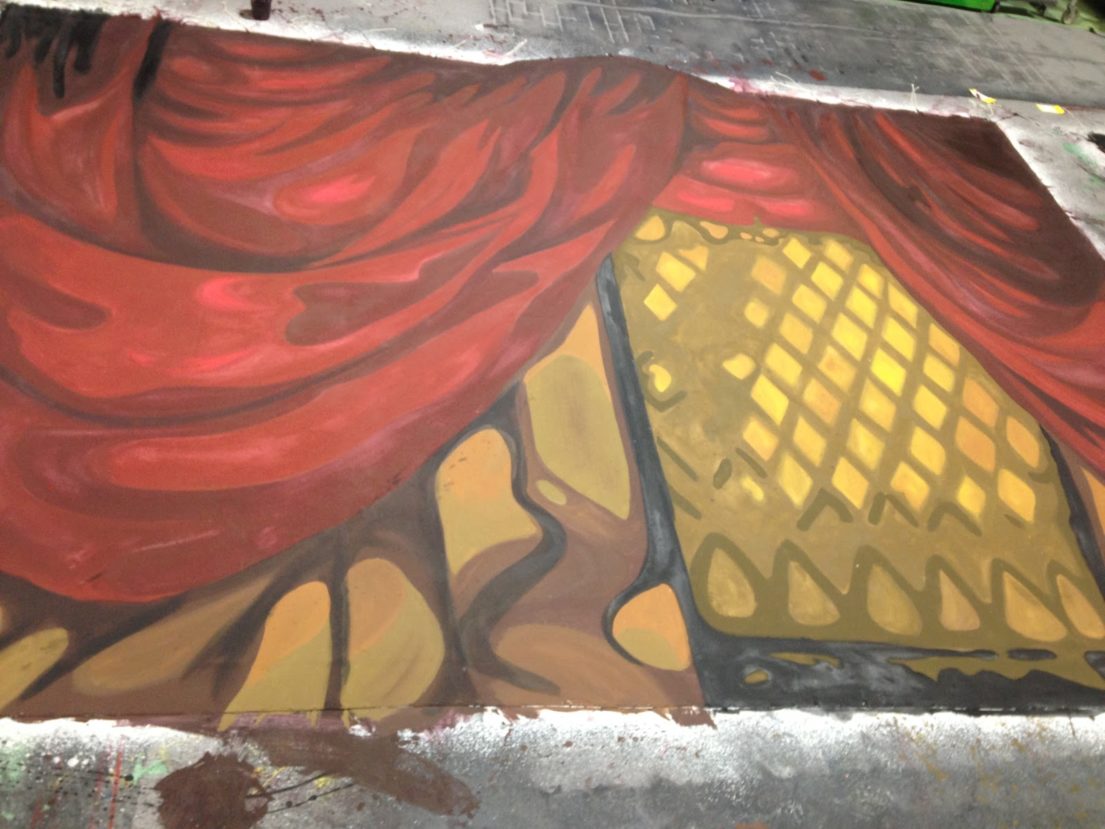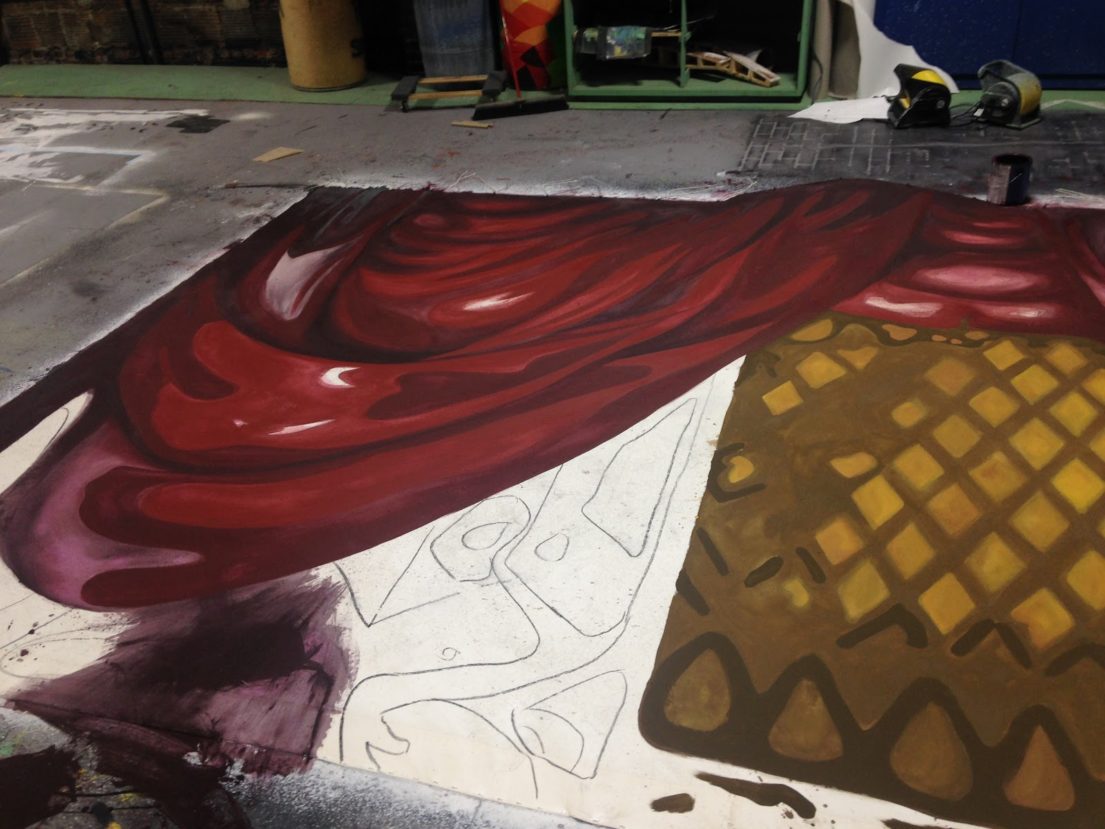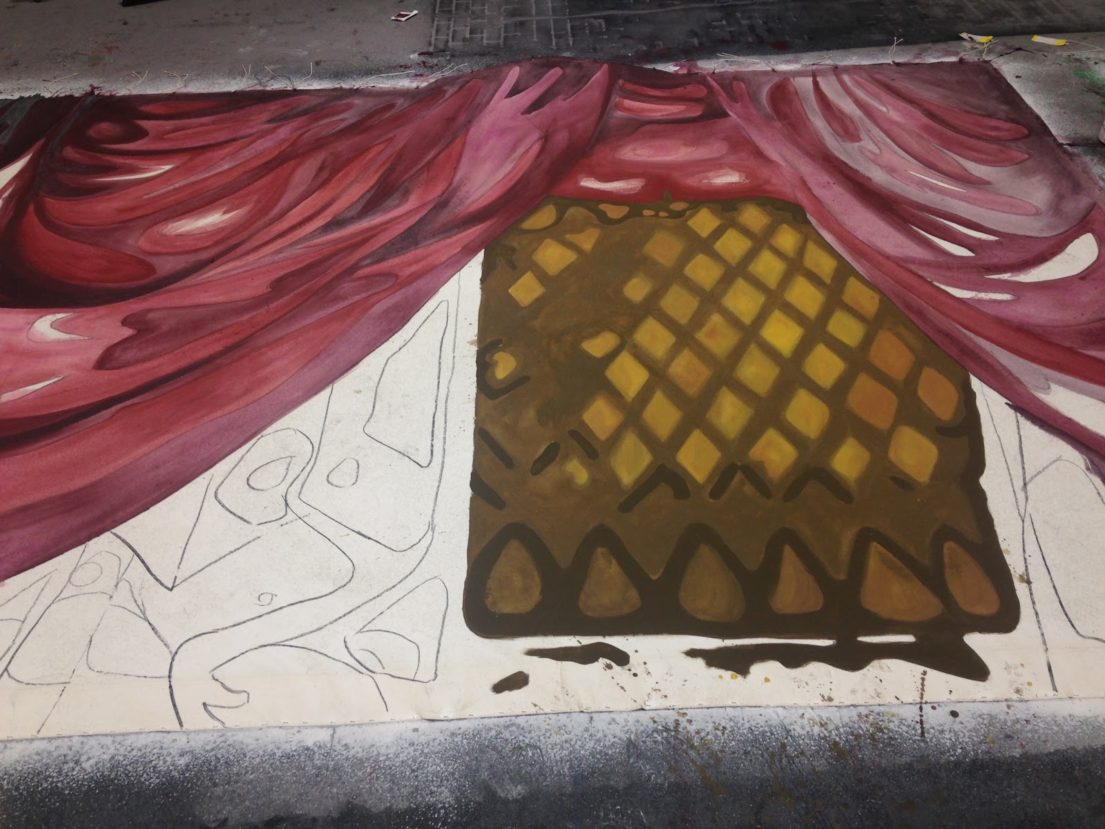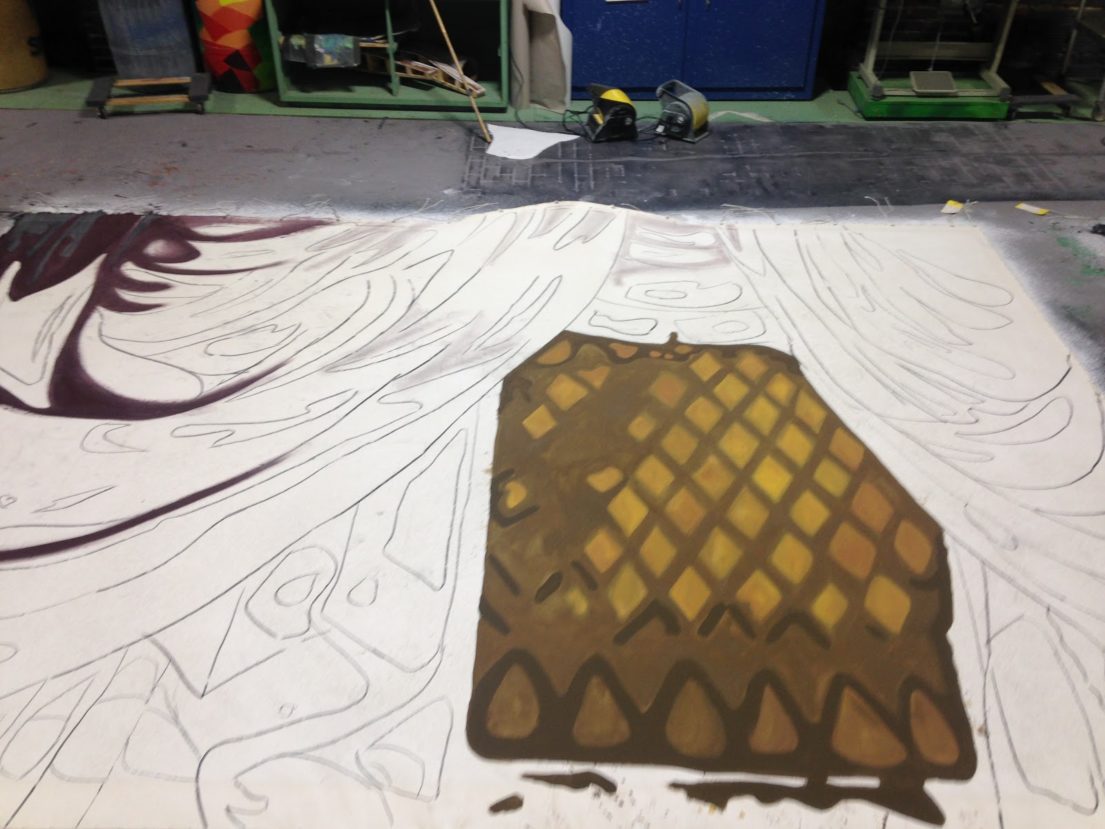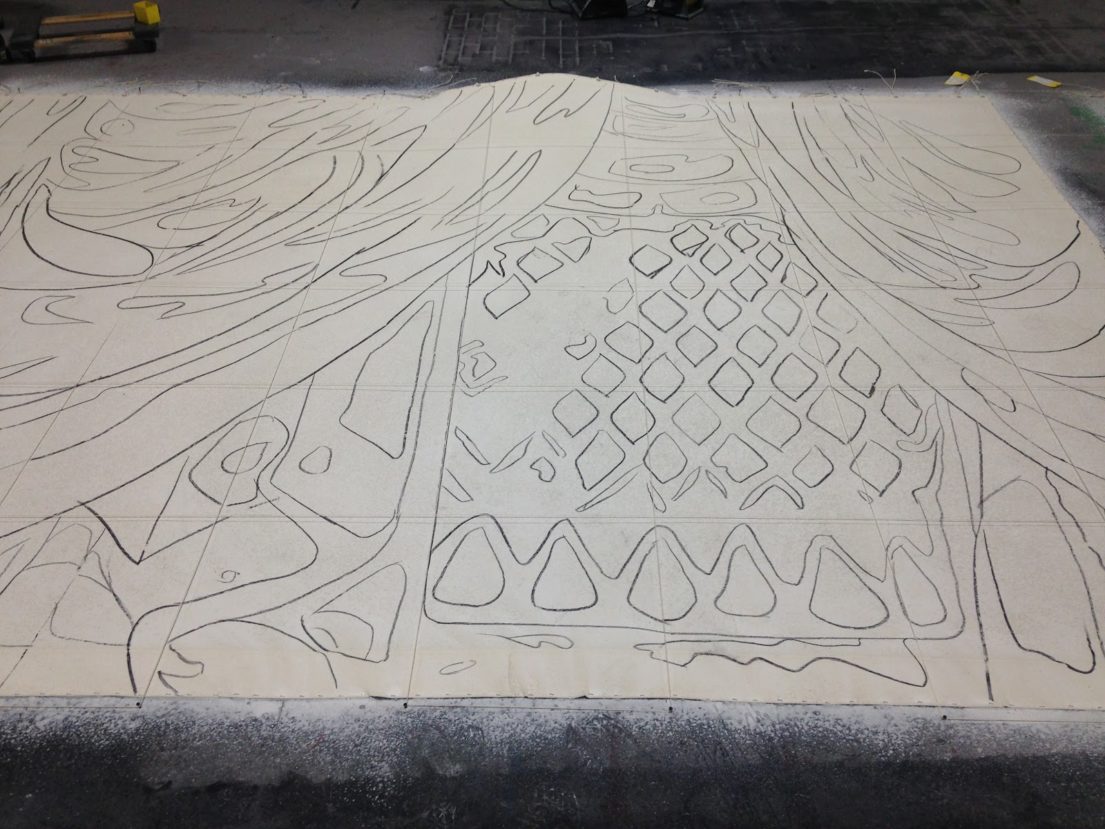
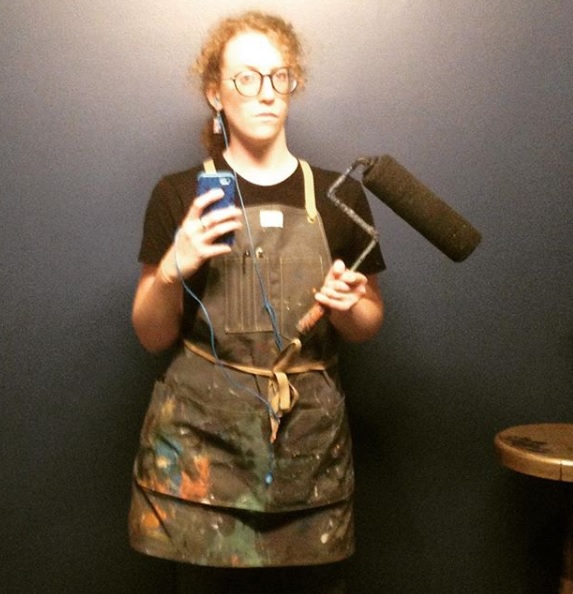
Featuring The Rose’s Scenic Charge Artist, Savannah Savick
Savannah Savick is The Rose Theater’s Scenic Charge Artist, which means she paints everything you see on stage at The Rose! Below you will find the steps Savannah takes to bring her ideas to life. We hope this gives you a glimpse of the process of working on the production side of theater!
The first thing the painter does before a show is look at the paint elevations. These are full color drawings made by the scenic designer to show what textures, patterns, colors and techniques will be needed on every surface for the show!

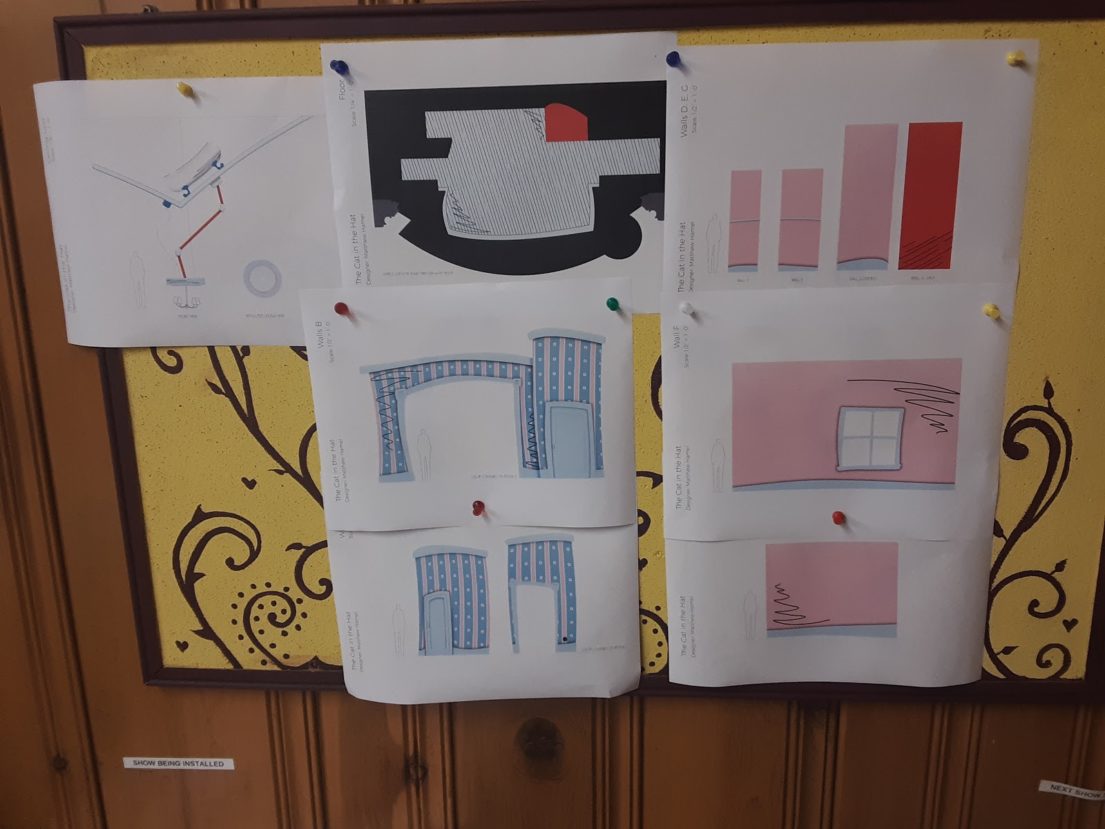
After that initial glance, I usually draft an email to the designer to cover any questions I might have. If a show is particularly detailed, usually we have a meeting or a phone call. Once this conversation happens and I know what I need to do, I make my shopping list. This task consists of going through my inventory in the shop. I check what colors I have, brushes, sponges, soaps, glue and anything else I might use for texture.
Once I have everything I need I make some samples. These are especially important for painting on fabric, foam, or doing any kind of complex texture that I don’t usually do. I did a lot of glitter samples for Elf: The Musical. For The Sound of Music, I will have to do samples of the foliage on our see-through areas, and samples of the mountains because they’ll be on a material I have never painted before: acrylic.
When the designer is confident that my sample will work, I continue on the real scenery. This process requires a lot of communication with all production departments. I have to go through the paint elevations again and determine what will be the hardest for me and try to get that on my paint deck first. I talk with Jackson, our carpenter, and Hunter, our Technical Director, to figure out what they want to build first. Usually this is determined by what supplies they already have versus what is still on its way to the shop. After this conversation, we have a plan and I can continue. A fine example of these steps is documented from our production of Goosebumps the Musical. Here were the Designer’s paint elevations for a scenic drop. There needed to be two identical curtain drops, and one had to be vandalized for the show.
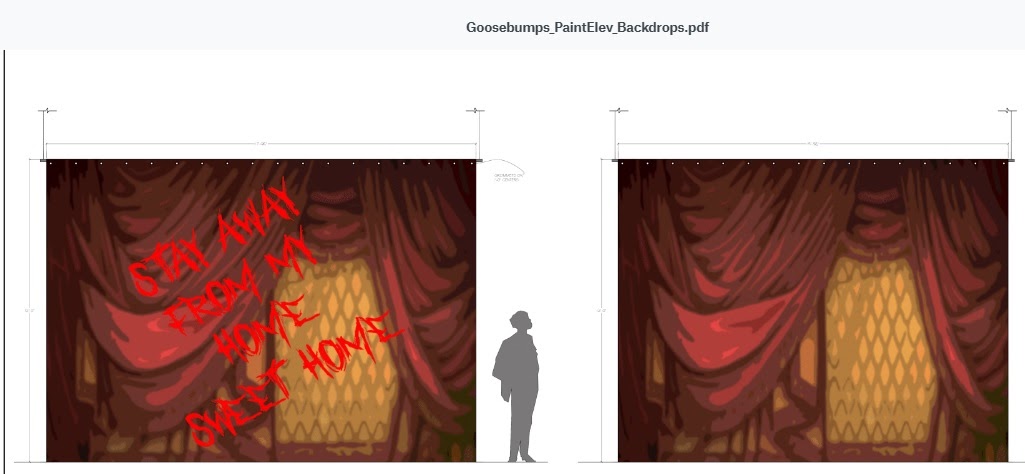
I started by treating, stretching, and fireproofing my fabric. Then, using a grid I drew the general shapes of the drapery and windows with charcoal. Chalk and charcoal are best in this situation because when the wet paint hits it, the lines dissolve.
In one of those pictures, you may have seen that I spilled dark red paint in the lower left area. Luckily, all I had to do to fix that was clean up as much paint as possible, let it dry, and continue painting. Here’s what it looked like on stage:
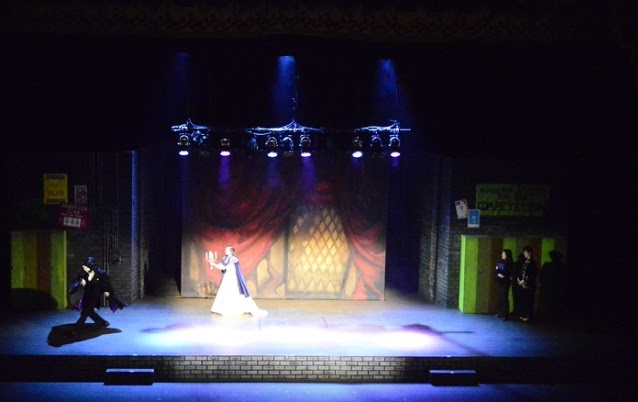
That is a typical step-by-step process for an individual painting project. Most drops at The Rose are much bigger than these Goosebumps drops, but the steps are similar.
Sometimes, we need to recycle drops. Any time we get to re-use something in theater is a special opportunity. Earlier this year we needed a foliage drop from last year’s Winnie the Pooh to be transformed for Ella Enchanted. Here is the before and after:
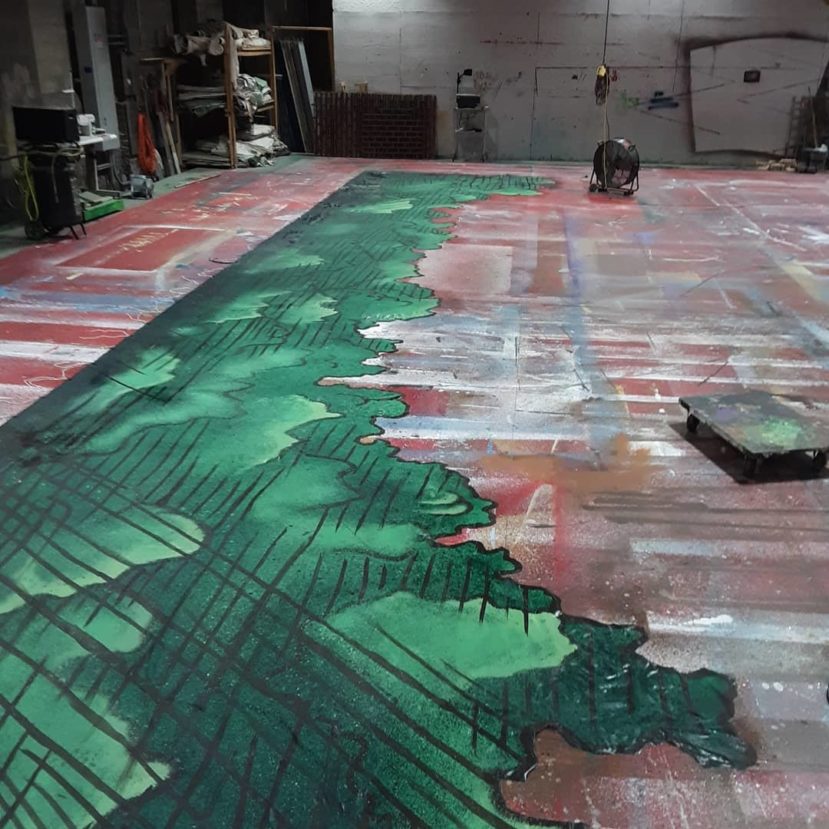
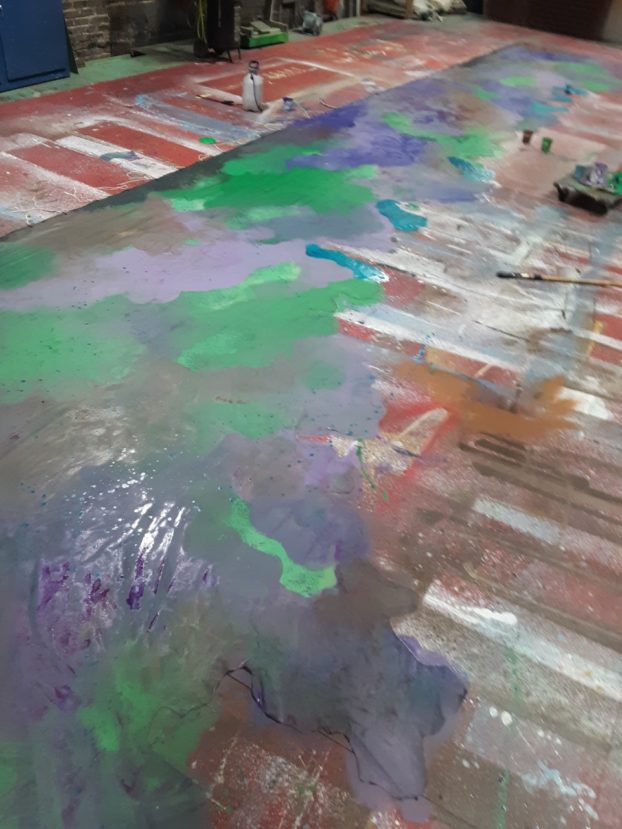
Painting the floor happens a day or two before Tech Week starts. This process usually happens after strike (taking everything off the stage) and before load in (bringing everything on stage for a new production) of the next show. I have to carefully consider each step and what tools I’ll need, and bring them to the theater with me. I also need to bring small containers of touch up paint for the show, in case anything needs touched up during the run. While painting the floor, it’s important to work quickly, but thoroughly, as there are a lot of steps to complete before I can leave the ghost light on. It’s most helpful to discuss any measurements needed with the designer or technical director before I get into the theater, because I’m often the only one there and it’s late at night. Make any measurements or drawings with chalk. Permanent marker will bleed through any color of paint and distract from the intended design. Once all the layers are complete, I spray a thick layer of sealer down to protect the floor paint.
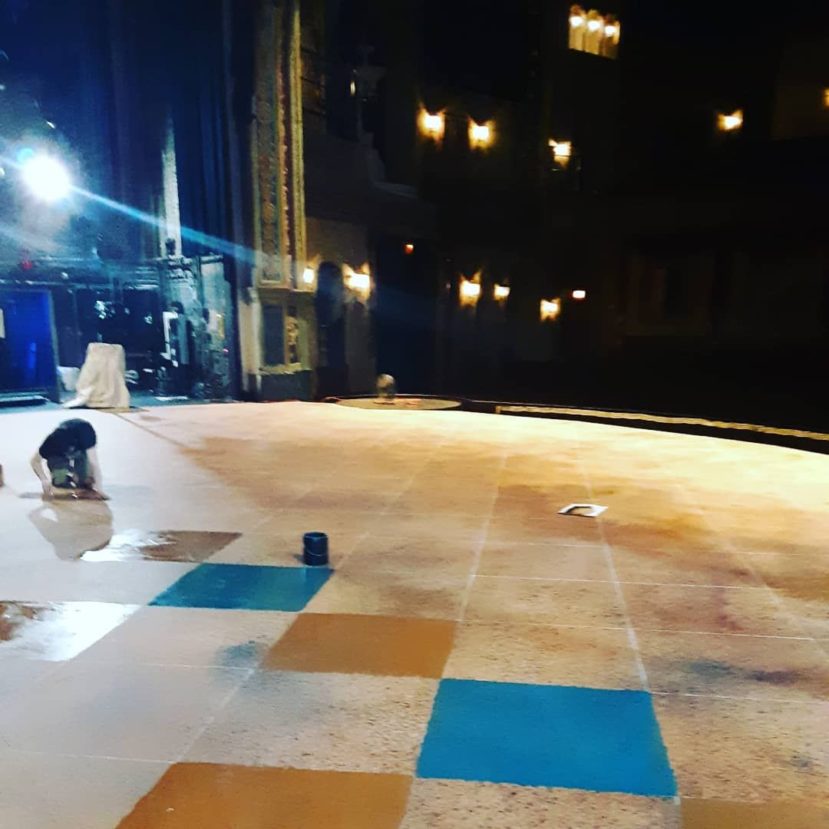
It’s important to keep in contact with the designer all through the paint process. I usually text them images and updates, just so nothing is a surprise when they’re here for Tech Week. Tech week is a whirlwind for all production departments. For paint touch ups or changes, I generally either receive an email with a list of items to fix, or a request for a meeting. I go to the theater and work to make the designer’s vision come to life. Once one show opens, I start the process all over again on the next one!
Fun stuff: I bring my dog, Poppy, to work a lot. She loves people, and just likes to be present while we’re doing stuff in the shop.
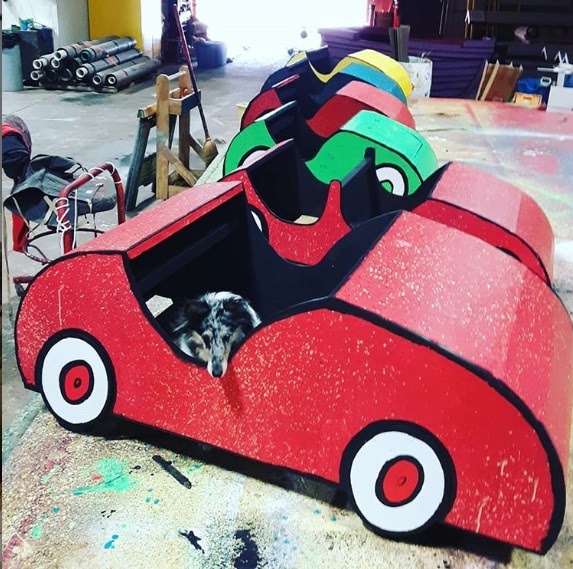
Thank you for sharing your process with us, Savannah!
Follow us on our social media accounts:
Facebook –https://www.facebook.com/therosetheater/
Twitter – https://twitter.com/RoseTheaterCo
Instagram – @the_rose_theater
